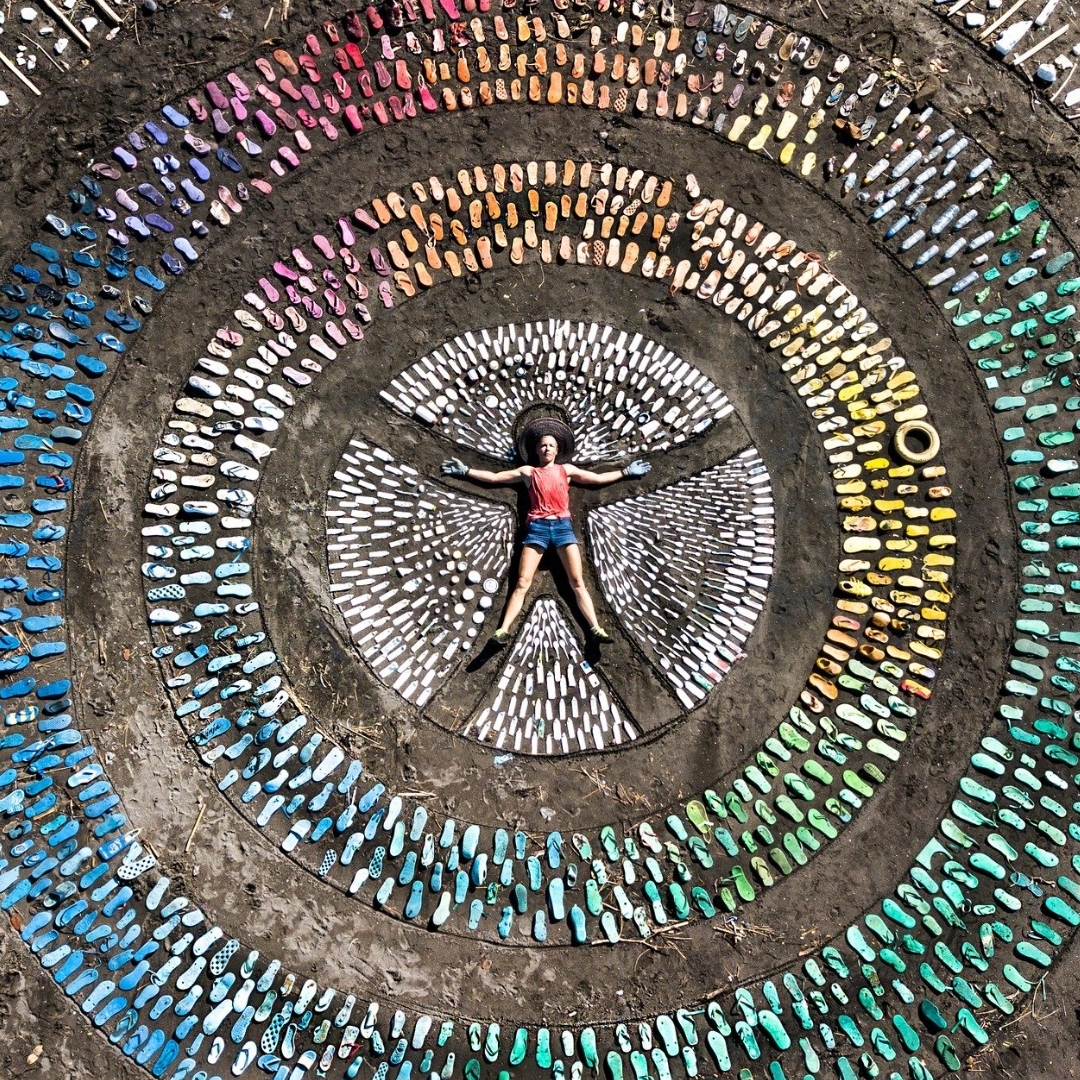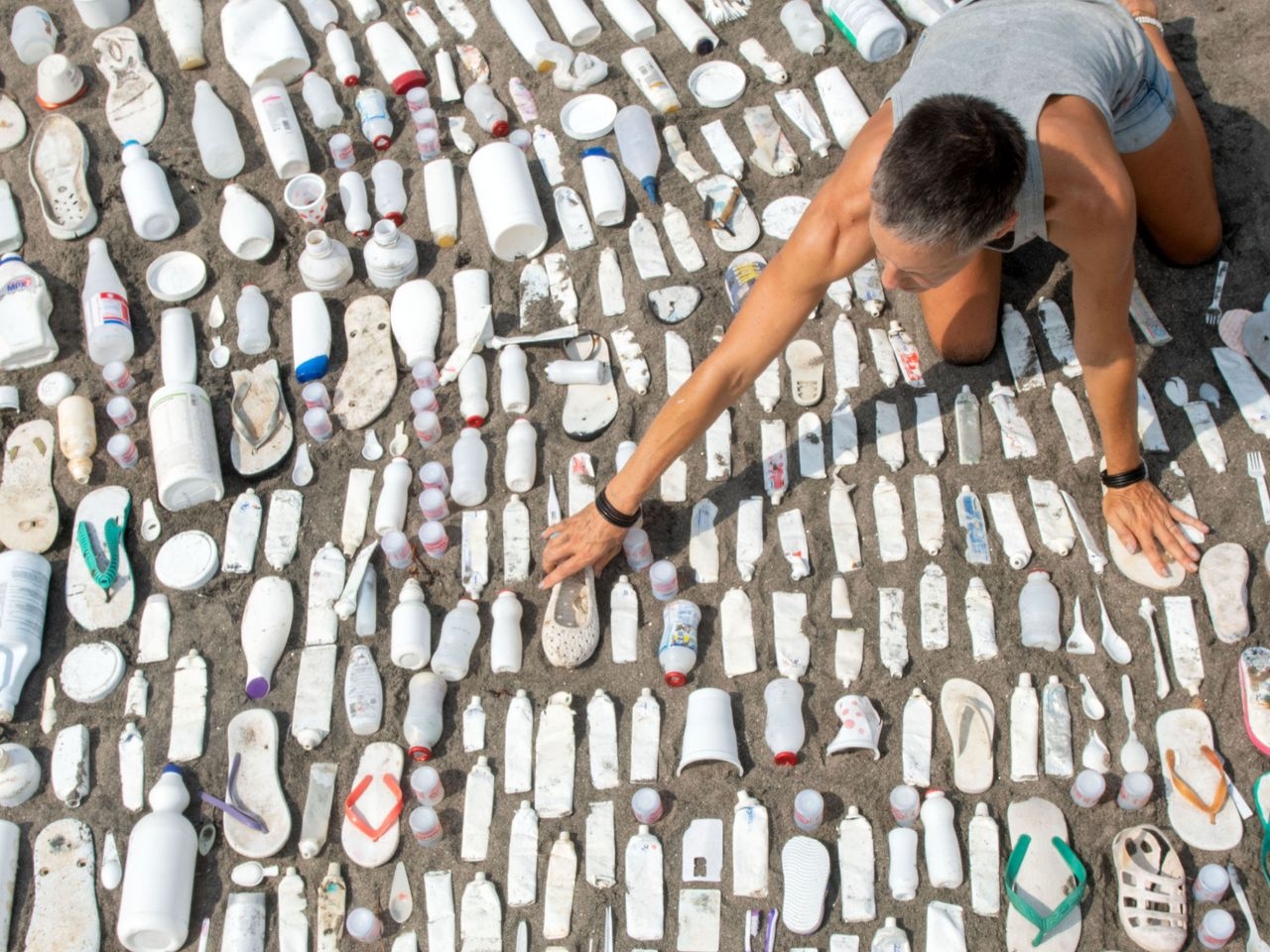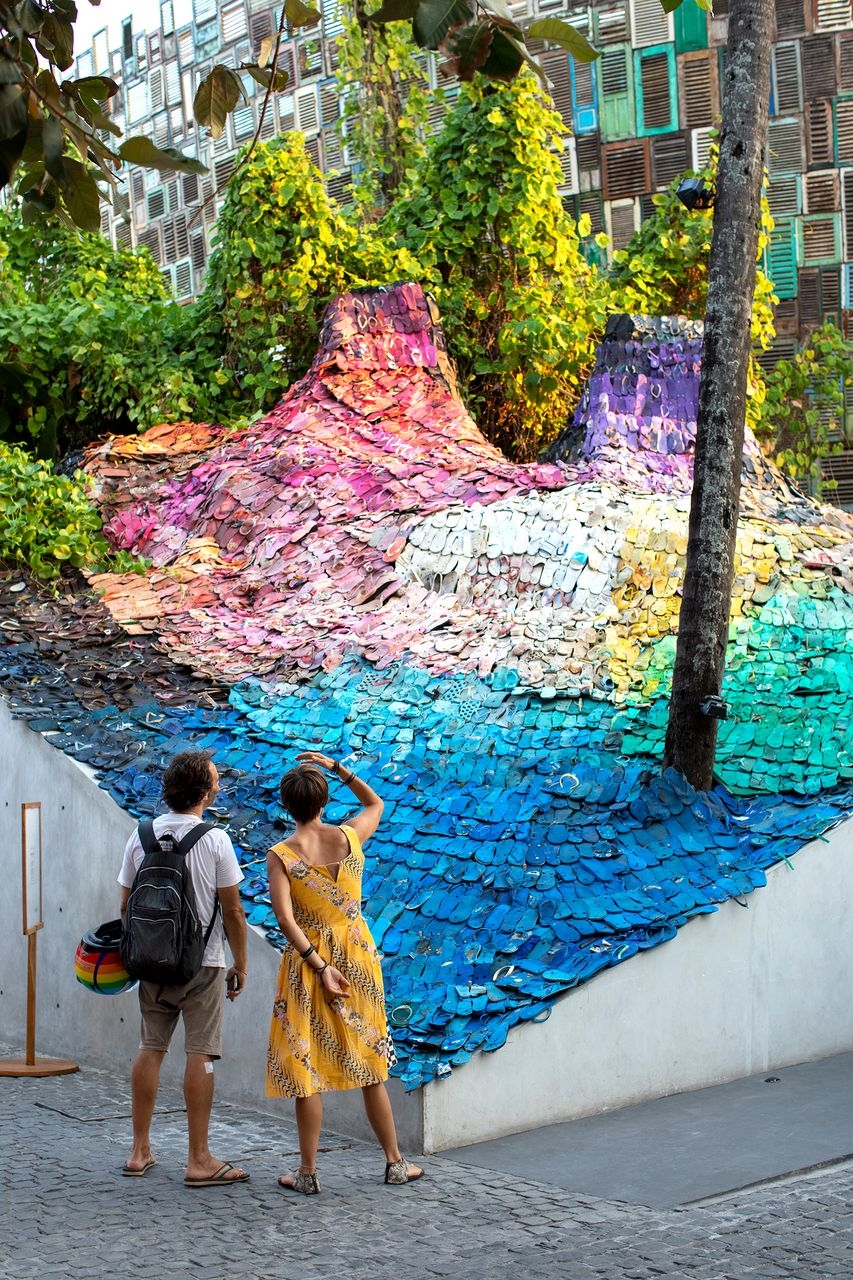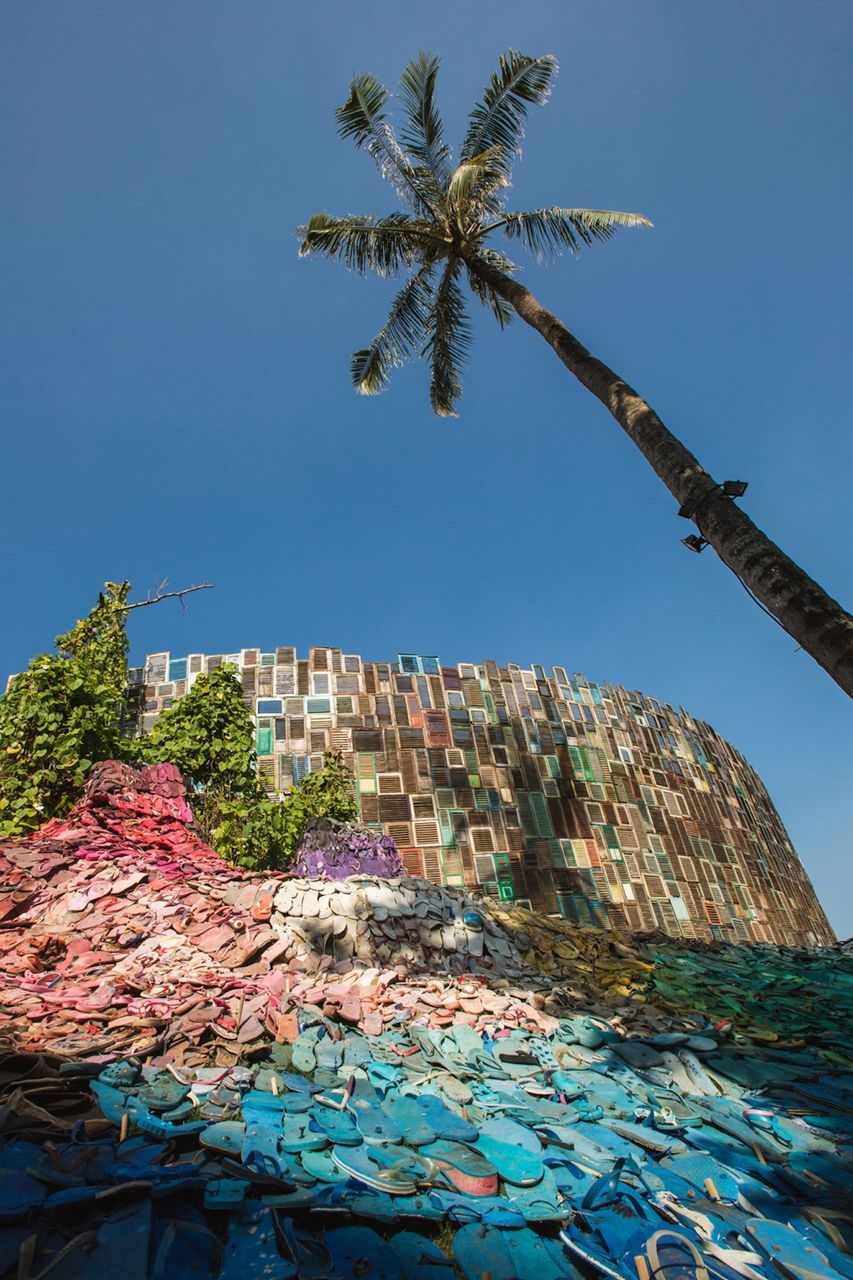
liina klauss: Eco-Activist and Eco-Artist
liina klauss makes art with garbage.
From afar, her pieces are supersized, rainbow-colored mosaics that cascade through prominent sites in Hong Kong and Bali. Backed by the likes of luxury watch label Breguet and Indonesian beach club Potato Head, some of her art even spans up to 30 metres wide. But upon a closer look, you'll find that her "canvases" are composed of empty Coca-Cola bottles, torn flip-flops, tarnished beach buckets, ripped pool noodles…the list goes on.
A painter by trade and with a background in fashion and textiles, 51-year-old German artist liina calls her practice of 14 years "land art that deals with the trauma of the pollution crisis". By getting creative with plastic waste, she claims control over an otherwise "powerless situation"; it's also a medium that offers a lighthearted approach to a mammoth global problem.
"It's easy to become desperate about the plastic pollution crisis and deem yourself helpless; but if you switch to a creative grain and start using your hands to alter the landscape, you're also processing this trauma yourself and for the viewers," says liina. "My art doesn't eliminate the pain surrounding waste; it allows us to feel it in a different way."

Eco-artist liina klauss makes art with garbage collected from the beach.
So far, her approach has been well received. In 2015, liina hosted her first solo exhibition at the Hong Kong Science Museum, and her environmental installations have since been a part of multiple festivals, art shows and international conferences around the world. She's worked with and for the likes of Hong Kong Maritime Museum, Hong Kong Ocean Park and HSBC. Beyond art, she's also spoken publicly about her eco efforts at Pattaya's Wonderfruit Festival, Hong Kong's Zero Waste Global Summit and more.
Last April, the Government of the Hong Kong Special Administrative Region implemented the first phase of a program aimed at carbon neutrality before 2050 by banning single-use plastics. While policy makers ponder over solutions to managing the massive solid waste generated in the city – 1.4 kilograms per person per day, according to the latest data in 2023 by the Environmental Protection Department – artists like liina have long been touting her green horn, not just by repurposing trash into art, but also by turning her pieces into an emotionally charged experience, whether for herself, the viewer or involved contributors.
From the get-go, she's welcomed schools, universities, corporations and communities to join in on her creative process. The teams at both Breguet's Hong Kong office and Potato Head in Bali, for instance, partook in beach cleanups to collect the "colorful strokes" required in liina's pieces, the colossal dimensions of which, she adds, mirror the size of the plastic pollution crisis.
"If you see one, single pair of discarded slippers, you don't think it's a big deal; but if it's thousands then we have a problem – that's what my art is trying to convey," she says, referring to her installations of countless fliplops, titled 1000, 2000 and 5000 Lost Soles, she put together from 2015 to 2019. "Every collaboration with beach cleaners is one of intense visual impact because we often find ourselves knee deep in trash at the beach: cleanup participants can see the damage the sun and ocean does to the plastic. It's not something you forget easily."

“5000 Lost Soles” — an art installation at Potato Head Beach Club in Seminyak, Bali
Items in white, she says, come aplenty – "50 per cent of beach garbage is white" – whereas blues and greens are harder to come by. After collection, liina washes, dries and categorises her colors within her garage-cum-studio space in Bali. This, she adds, can sometimes take up to days and weeks, explaining why good upcycled art is so rare. For the creative process itself, she keeps her "treasures" as is and neither adds or edits: the trash is simply rearranged to deliver her message, with the help of a drone that hovers and captures photos from a bird's eye view.
What results are aforementioned rainbow-hued tapestries; bulbous children's costumes; murals of micro plastics; a mosaic of planet Earth and more. Each is a product of liina's creative juices and of the bounty found, which, she says, is inherently a humbling process.
"I am not in control of the final image: if I don't have enough yellows, I can't produce more. I create from whatever I find: it's a very real process" says liina. "As humans, we love to be in control but in reality, we should be working with nature. There's a sensitivity and intelligence involved with going with the flow, and it's something we should all practice, artists or not."
The artistic process itself, however, is far from the most challenging part of her work.
"It's altering perception," she says.

liina’s color palettes are born from a collaborative beach clean-up effort.
Though her medium is trash, she hopes the heavy messages of pollution and sustainability can take a backseat to art appreciation upon first impression.
"It's so challenging to work with trash because of the stigmas involved. People see a product – say an Aqua-brand water bottle – with very specific marketing that's been so ingrained into our perception. As an artist, I want the viewer to perceive art without that association: I don't want you to see an Aqua water bottle first; I want you to see the art, and then the overwhelming trash within. That's the process," liina says.
"We don't want to be confronted with crises, waste, or trauma because they strip away our power. So how do you make people look at something they don't want to? You make it beautiful: oh hey, that's a rainbow, that's a planet, that's a colourful blanket. Then you lure them closer."
The hope, liina adds, is for her viewers to rethink not only the notion of trash but also their next shopping decision.
"Just imagine finding more than 1,000 flip-flops in just three hours of scouring a beach. The next time you go to a shoe store, you'll look at the products in a different light."

